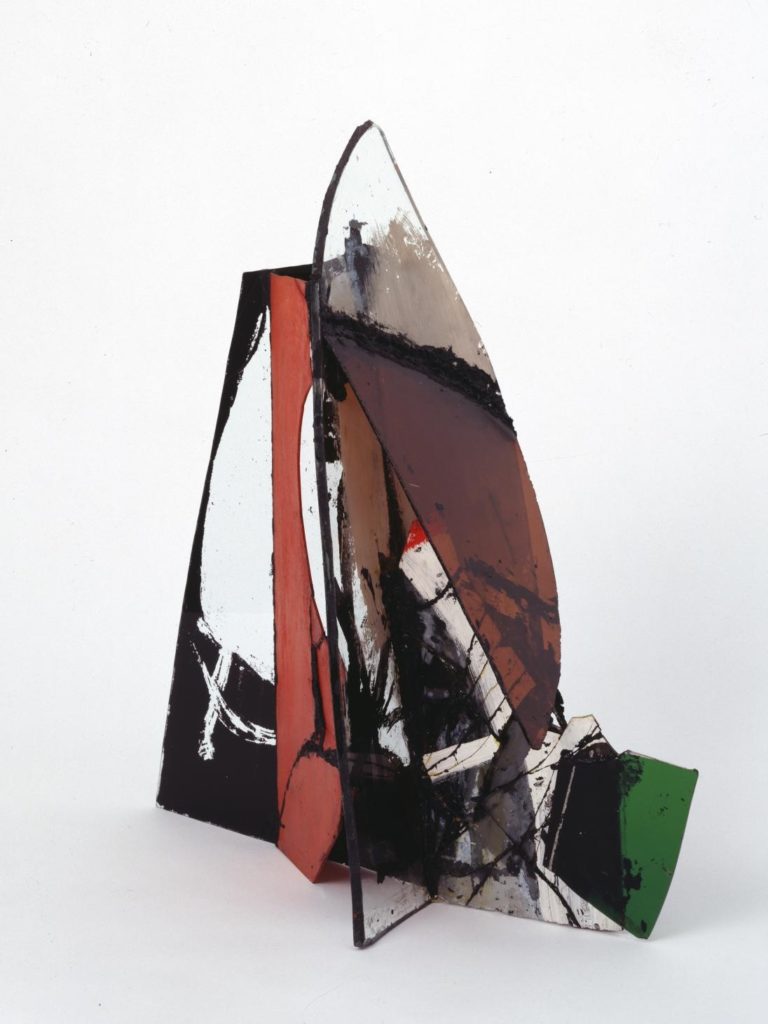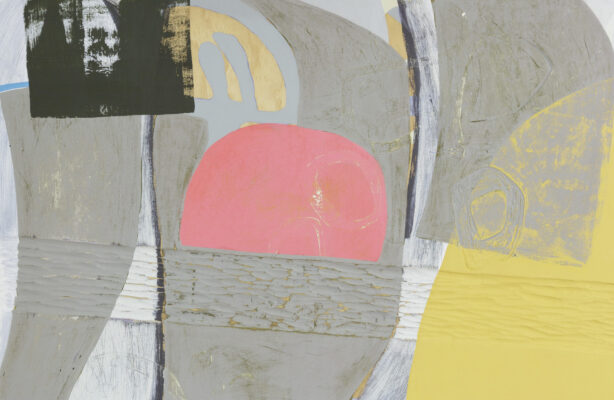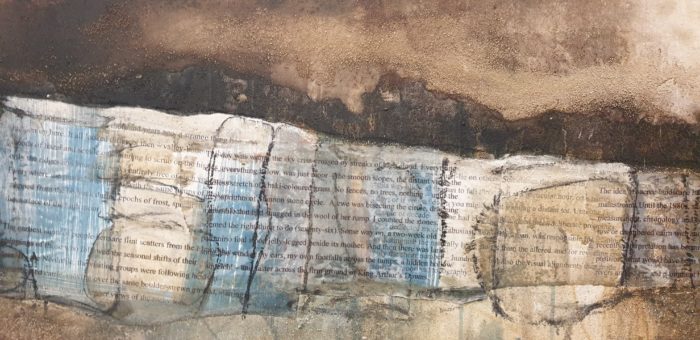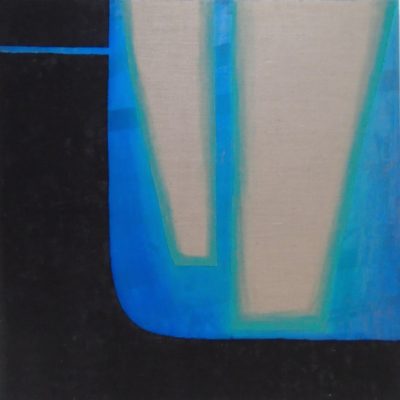This website uses cookies so that we can provide you with the best user experience possible. Cookie information is stored in your browser and performs functions such as recognising you when you return to our website and helping our team to understand which sections of the website you find most interesting and useful.
Course details
This fun, experimental course explores ways to develop creative practice through processes of abstraction and translation between 2D and 3D.
Simple drawing exercises in the studio or harbour, will help us view and express the 3-Dimensional scene in new, abstracted ways. These distilled drawings will then be further abstracted and developed to create 3-Dimensional abstract forms.
In turn, the small sculptures produced, may be further developed with colour or texture, to become the starting point for a new, 2-Dimensional piece: a series perhaps of drawings or paintings. These could then be developed into something in-between 2-D and 3-D, such as an abstract relief that can be hung on the wall, or a mobile of 2-Dimensional shapes hanging from the ceiling – thereby becoming 3-Dimensional through kinetic interaction and juxtaposition. This object could, itself, then suggest further ideas for painting and so on.
We will use a variety of processes and media, to push ideas and possibilities forwards. The emphasis is on exploration, development, and play. The aim is not to produce a “finished” work of art, but to open our minds laterally, and discover new ways to move our work forwards, to free us a bit from expectation, disappointment and creative block, helping us to have more flow, autonomy and momentum in our art practice.
We will look at St Ives artists Peter Lanyon, Bryan Wynter and Ben Nicholson, and American artist Ellsworth Kelly, who each used the transition between 2- and 3-Dimensional space to move their work forwards.
Highly structured for the first day or so, the course will gradually become looser as each member of the group explores their own direction, at their individual pace. After close group instruction on the first day, as the course progresses, Camilla will help each student respond to their work as it naturally develops and moves forwards.


Day to day plan
This is a rough indication of what to expect over the course. However sometimes the structure of the days may alter depending on the nature of the group and weather.
Day 1
Begin the day with making observational drawings in the studio or around the harbour. In the afternoon, develop these drawings in the studio to produce 3D models in paper or card.
Day 2
Focus on developing your 3D models, introducing colour and texture and photographing them. Use your 3D pieces as the subject matter for exploring further drawing and painting possibilities.
Day 3
The final day will be less structured and could be spent working from your drawings and paintings, developing your ideas into 2D/3D/kinetic mobiles/reliefs or a creating a mixed-media 3D piece. It could also involve one-to-one time with the tutor to discuss how the processes explored in the course might be used to develop your own practice.
What will I learn?
- A technical foundation in abstract drawing techniques transferable to any project.
- Alternative observation techniques and a greater understanding of what draws your eye and expressive attention.
- An understanding of the possibilities of multi-dimensional working.
- How other artists have used the transition between 2D and 3D in their work.
- Discover new ways to move your work forward.
Who would this course suit?
The course is not about technique and finished artwork, but about experimentation, and development, so is suitable for curious beginners as well as more experienced artists.
Taught by
What to Bring
Our studios are fully equipped and we provide you with all the materials you need for your course. However, if you have a favourite set of brushes or any specialist materials that you would prefer to use, please bring them with you.
Timings and Breaks
The first day starts at 10am and finishes at 4.30pm, please aim to arrive ten to fifteen minutes before the start time.
All course days after that start at 9.30am and finish at 4pm and there will be an hour for lunch. There are plenty of nearby places to eat and we will serve tea and coffee at break times during the day.
FAQs
Studio Courses
How can I get help in choosing a course?
Our friendly expert staff are always happy to discuss your needs and our courses in more detail to help you with your decision. Please call us on 01736 797180
How do I get my work home?
Tutors have special techniques for transporting oil paintings and the school has plastic folders available in our shop for £3.50 or do bring a portfolio.
For international students we are happy to arrange transportation of your work back home.
What do I need to bring?
Absolutely nothing! All materials and aprons are provided although some people do like to bring their own set of brushes.
What do I do for lunch?
Courses allow an hour’s break for lunch and there are numerous places nearby or you are welcome to bring a packed lunch into the studio.
What times do courses run?
Most of our courses start at 10am and end at 4.30pm on the first day. Subsequent days we start at 9.30am ending at 4pm.
Weekend Courses run 10am – 4pm on the first day but the final day starts at 9.30 and ends at 3.30 with a short lunch break to enable people to get home that evening.
Do you have to be experienced to come to the School?
The School is a very friendly and welcoming place for all ages and experience. Our drop-in life classes and August half-day workshops are ideal for those wanting to have a go for the first time. Most of our longer courses are also fine for novices.
If any of the courses do need a bit of experience we flag this up in the brochure and on the website.
Booking a Course
How can I reserve a place?
We will hold a provisional reservation for 24 hours if you give us a call whilst you find accommodation. Otherwise please book online or by telephone 01736 797180.
You can reserve a place with a £100 deposit; balance is due 12 weeks before course start date.
About St Ives
Where do I park?
The nearest long stay public car parks are the Island and Barnoon Long Stay Car Park, both a 5 minute walk away. In the peak summer months it may be easier to park at Trenwith Car Park by the leisure centre and walk down into town. If you don’t fancy the walk up the hill at the end of the day there is a shuttle bus which runs from outside the cinema.
How do I get there?
Public Transport: If you are coming from further afield the main train line runs into St Erth which is a 15 min taxi ride away or you can take the St Ives Bay Line which runs approx. every 30 minutes. The School is a 10 minute walk from St Ives station.
Driving: M5 will take you to Exeter where we recommend that you take the A30 across Bodmin Moor and into Cornwall. After passing Hayle, leave the A30 at St Erth roundabout for St Ives. Turn right at the second roundabout. This road will take you through Lelant and Carbis Bay into St Ives.
Where can I stay?
St Ives has a huge selection of hotels, guest houses and self catering accommodation to choose from. Please browse the art holidays St Ives section on our website and give us a call if you would like any help.









